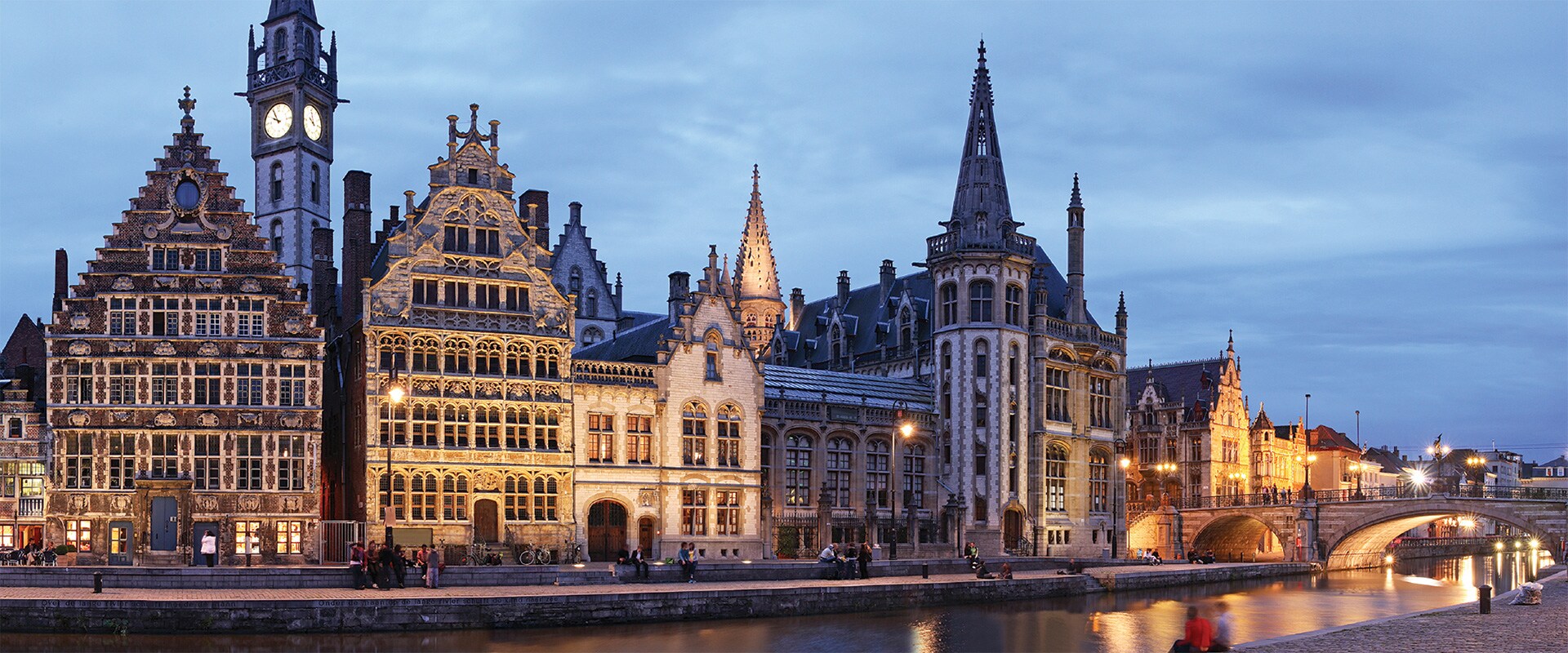Explore Ghent in Belgium
It’s not Belgium’s best-known city but Ghent is a marvel in its own right: a cultural hub with medieval roots and striking architecture. In this article, Brian Johnston says it’s waiting to be discovered.
It’s hard to know where to look in Ghent. Your eyes will dart, your neck will swivel and you’ll have trouble deciding which building is best. Some admire the Flute Player House, named for the medallion of a flautist beneath its eaves. Others appreciate the Guild House of the Free Boatmen, whose decoration celebrates the workers who powered the medieval port. Gilded ships sail across the roofs of baroque buildings, and Renaissance houses are an elegant contrast to fortified Gothic neighbours.
Local Neighbourhoods
Individual buildings can almost be overlooked among the riches. Graslei and Korenlei are riverside quays lined with medieval guild houses that display centuries of architectural styles. Whole compact districts such as Patershol are crammed with the former houses of workers and craftspeople, now transformed into chic bars, petite restaurants and gentrified homes with lace curtains and flowerboxes. Favourite outlook? Perhaps the view from St Michael’s Bridge onto an entire ensemble of gables, towers and church spires.History
Ghent is a city soaked in history. The first fortifications were built at the confluence of the Leie and Scheldt rivers in the 10th century and, by 1180, the Counts of Flanders had developed a castle. In the Middle Ages, a great textile manufacturing centre arose. In Ghent’s heyday, around 1500, the city bristled with churches, taverns, market halls and merchants’ mansions.Old Town
The old town seems scarcely changed since. Stroll the mostly pedestrianised streets and you’ll sense the energy and can-do optimism that once blossomed when Ghent was the Dubai or Shanghai of its day, and northern Europe’s second-largest city after Paris. It had grand architecture, a prestigious university and a distinctive Flemish style of art that would become famous throughout the world.First World War
Of course, in Belgium you’ll be reminded of the sacrifice of ordinary people, too, especially if you visit the nearby battlefields of Flanders and cemeteries such as Pheasant Wood and VC Corner. Memorials and museums tell the story of the Australians and others who fought and died here, not the stories of generals and empires.Aristocrats and Castles
Admittedly, there were aristocrats in Ghent: the Counts of Flanders. Their city-centre Gravensteen castle is rather dour and heavily fortified. Parade the battlements and you can look down on old-town rooftops and canals. Yet the castle seems small and rather inconsequential compared to Ghent’s handsome guild houses and proud civic buildings; seek out the colossal Stadhuis (town hall), which was started in 1518 but took four centuries to complete. Also impressive are the Cloth Hall and its belfry, striking symbols of the wealth that once flowed through this part of Europe. Competing with the belfry across the square is St Bavo’s Cathedral. It displays a huge 24-panel altarpiece by great early Northern Renaissance artist Jan van Eyck, considered one of the most influential paintings in European art.Churches
Of course there are churches aplenty in Ghent, loaded with art and treasures paid for by wheat and wool merchants. St Nicholas has a relatively unadorned exterior hiding a colourful interior of twisted pillars, patterned floors, elaborate baroque mouldings and giant gold candlesticks. Down the side of the church you’ll find a 13th-century inn that suggests Ghent’s pious merchants weren’t opposed to a tankard of beer.On Tour
Discover this city on our 15-Day Western Front Explorer tour. At Antwerp, pay your respects at the Battlefields of Fromelles, including the Flanders Field Museum, Pheasant Wood Cemetery and the VC Corner Australian Cemetery before exploring the Somme Battlefields, including the 1st and 2nd Australian Division Memorials and the John Monash Centre. Alternatively, enjoy a guided discovery of Ghent, including a canal cruise. The choice is yours.
Images courtesy of Ed Norton, KavalenkavaVolha, Orpheus





